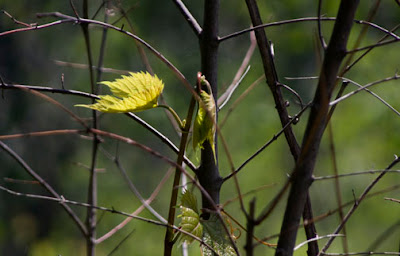An open letter to the Wauwatosa Common Council.
My positions on UWM’s plans for the county grounds closely match those of Barb Agnew, director of the
Monarch Trail, and I will try not to repeat them. I have four main points to make: 1) constituencies, 2) compromise, 3) some details of the plan, 4) caution.
1. Who are the constituents here and what are their interests?
The committee on community development discussion last Tuesday night was dominated by concerns about the details of the UWM plan. UWM is clearly the dominant stakeholder. Representatives of the Monarch Trail, Riverkeeper, Sierra Club and other concerned groups, although not allowed to speak, were visibly present. Some of their concerns were acknowledged during the discussion. Although the audience included ordinary citizens, like myself, what was missing was even a passing reference to the overwhelming opposition that was expressed in last week’s public hearing to any sort of development. The point I made at that meeting still stands: no constituents stood up to support this plan. The environmental organizations are not taking the extremist position in this conversation; they—however reluctantly—see the need for compromise.
2. It’s time for a new compromise.
Ten years ago the Common Council compromised. The public then, as now, clearly wanted no development. The Kubala-Washatko plan that was approved by Wauwatosa allowed for some development. During the past year we have seen further compromise. UWM’s good plan takes many environmental concerns into account. However, the requested acreage increased from 66 to 89 and that was approved. Now you are being asked to allow a significant increase in overall square footage of development from 850,000 to nearly 1.2 million. This is too much. It’s time for the developers to compromise, not the public.
3. The devil is in the details.
Most of the plan, which includes habitat protections, bio-remediation of storm water, and sensitivity to the relationship between parklands and developments, among other things, is a good compromise. The committee discussed some specifics of the plan and added judicious restrictions. These were accepted by the UWM representatives at Tuesday’s meeting. I want to urge action by the Council on three major details.
As Barb Agnew has said, it would be a mistake to raise the building heights in order to reduce the footprint of development. (See my
previous blog for more on that.)
Instead, the overall footprint of development should be reduced by limiting the square footage to the originally agreed 850,000. UWM needs only a small fraction of that for its campus. This is the compromise needed to give the public its due.
The initial phase of development, as presented to the committee, makes it clear that complete development is not only years away but speculative. While it may make economic sense to install the utility infrastructures in anticipation of full development, the exit road to Swan Blvd., which would divide protected wildlife habitat areas, should not be constructed until a later phase makes it necessary.
4. Caution and vigilance will be needed.
By the end of a meeting that went very late some of the aldermen seemed a bit shell shocked at the magnitude and importance of the issues being discussed. (Read
the blog I posted online previously for a more complete description of that meeting.) A very real dilemma was inadvertently created by the coincidence of such a large turnover in the middle of this process. I urge the common council to acknowledge the need to slow this process down and honor the instincts of those committee members who had valid questions. Please send this back to the committee before a final vote is taken.
As Alderman Jay pointed out so graphically, vigilance will be needed even after your well-intentioned specifications are put in place. This is not the moment to proceed without exceptional caution. I thank you all for your sincere efforts and your obvious concern for this vital and special place. We are about to change Wauwatosa indelibly. Let us do it right.
For a portfolio of photographs of this area that I shot during a two hour walk on Wednesday, April 29, go to my
flickr site.





















